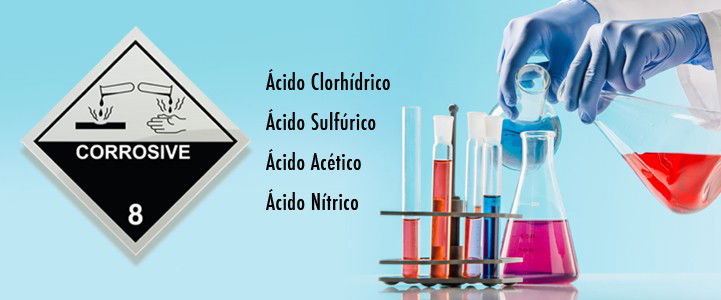Published on December 13, 2017.-
We understand corrosive substances as those capable of destroying or irreversibly damaging those surfaces with which they come into contact. For the handling of these substances, appropriate implementation must necessarily be used, such as: gloves, clothing, face masks, etc. In the places where it is deposited or contained, according to international regulations, it must be specified with a standard corrosion icon.
Corrosive substances generally have an extreme pH. In contact with organic matter, acids catalyze lipid hydrolysis or protein denaturation, also resulting in caloric production whose joint effect leads to irreparable tissue destruction. Bases, on the other hand, dry out organic matter in an extreme way.
Here are some examples of corrosive substances:
1. Hydrochloric acid. Also known as muriatic acid or etching
2. Nitric acid (HNO3) -
3. Sulfuric acid (H2SO4).
4. Formic acid. (CH2O2).
5. Concentrated acetic acid. (C2H4O2).
See more...
Source: http://bit.ly/2ymrANe







